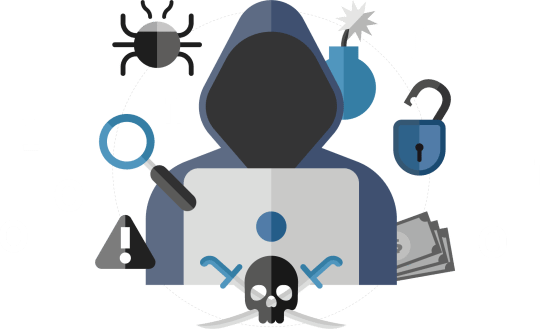Endpoint threat detection and response capabilities are now an essential component of any enterprise security solution. The tipping point that led to the evolution of endpoint security and the move away from pure blacklisting and signature-based technology was the series of large and high-profile attacks in the recent past involving top brands such as Target, Home Depot, and Sony. The benefits that continuous visibility into all data activity bring, make endpoint detection an unavoidable part of your security regime.
You can compare EDR with a surveillance camera in a bank ATM or a supermarket floor. It solves the modern security operations centers’ biggest headache – advanced attackers smoothly dodging online security programs and residing on endpoints up to 250 days before being identified. EDR records all endpoint activities and creates a verifiable record of all actions that take place on endpoints and critical servers. Even if attackers compromise an endpoint and erase their tracks, EDR captures the entire chain of events and securely stores it for future reference.
Endpoint detection and response tools use sophisticated analytics that detect anomalies and identify patterns such as unrecognized connections, rare processes, and other risky activities. These activities are flagged based on baseline comparisons. Automatic alerts can be triggered for action based on anomalies. When an alert is triggered, using EDR, security analysts can quickly query to validate threats, eliminate false positives, and browse recorded data to analyze and respond. The advantage with endpoint threat detection and response is that it provides deep and high level context for endpoint data that big data or SIEM software products cannot alone provide.
When a security incident is identified, EDR provides advanced tooling for action, banning malicious files from running in the environment, stopping malicious processes, or quarantining affected machines. By analyzing attacks recorded by EDR, you can understand the tools, techniques, and practices of the attackers, their sophistication, and the patterns of the breach, required to identify similar techniques in the future.
The benefits of endpoint threat detection and response include:
- Deeper detection and response
- Continuous monitoring, threat ‘hunting’, and remediation
- Ability to counter advanced attacks and gain real-time insight into how these attacks affect customers
Before choosing an endpoint solution, you must analyze the level of vulnerability of your organization by answering these questions:
- Is your organization in a high-risk area such as financial services or government, or does it provide professional services to support such organizations?
- Are your users allowed to visit any website of their choice?
- Are they using mobile or other high-risk devices that you don’t have visibility into?
- Are they using laptops and connected mobile devices outside of your network?
- Are they sharing their connected systems with others, such as family members and clients?
If the answer is yes to most of these questions, you require an advanced, reliable endpoint detection and response solution.
Endpoint threat detection and response solutions must provide certain essential capabilities. EDR products must ideally provide a wide variety of data management options because all endpoints are not made equally. Data management options and flexibility override any data management principle. Large organizations require EDR solutions that can track activities across the entire enterprise infrastructure, mandating tremendous data management scale. Products must also enable threat ‘hunting’ activities with the ability to answer complex queries in a reasonable timeframe. SOC personnel will also want EDR solutions to supplement their intelligence gathering capabilities with built in analytics. This can be cloud-based threat intelligence correlation, statistical modeling, or machine learning. Advanced endpoint detection and response tools must also enable open integration with other security tools. They must fit easily into a broader cybersecurity analytics system, including SIEM tools and CMDBs, threat intelligence, network forensics, malware analysis and so on. The EDR solution and a comprehensive service model will enhance and protect your organization against threats that are undetected and not reported during risk analysis.
So what does the future hold for EDR solutions? Gartner predicts that some 80% of endpoint protection platforms will include user activity monitoring and forensics capabilities associated with EDR by 2018.
Most organizations have limited visibility into threat intelligence in the absence of threat intelligence teams that are expensive to maintain. By partnering with a trusted adviser you can proactively leverage global threat intelligence by using EDR solutions to identify indicators of compromise of security. With EDR you can mark the beginning of the establishment of your control over your systems in the battle against cyber fraud.
[su_box title=”About ” style=”noise” box_color=”#336588″][short_info id=’98183′ desc=”true” all=”false”][/su_box]
The opinions expressed in this post belongs to the individual contributors and do not necessarily reflect the views of Information Security Buzz.



